Taliesin West, a masterpiece designed by the renowned architect Frank Lloyd Wright, served as his winter residence and educational facility in the heart of the Arizona desert from 1937 until his passing in 1959. Nestled in the foothills of the McDowell Mountains in Scottsdale, this architectural marvel showcases Wright’s distinctive organic design principles and his deep connection to the surrounding landscape.
Taliesin West continued to thrive until June 2020 as the primary campus for The School of Architecture at Taliesin, fostering generations of innovative architects. The school closed after almost 90 years of operation. Today, the Frank Lloyd Wright Foundation, dedicated to preserving Wright’s legacy and promoting his visionary ideas, operates from this location.
The name “Taliesin West” was inspired by Wright’s beloved summer residence, Taliesin, which is situated amidst the lush rolling hills of Spring Green, Wisconsin. Both properties exemplify Wright’s commitment to integrating nature and architecture, creating harmonious and sustainable environments.
Taliesin West in Arizona Technical Information
- Architects: Frank Lloyd Wright | Biography & Bibliography
- Location: Frank Lloyd Wright Boulevard in Scottsdale, Arizona, USA
- Topics: Houses, Schools, Unesco Heritage, Organic Architecture
- Project Year: 1937
- Area: 620 acres (250 ha)
- Drawings: University of Texas at San Antonio, College of Architecture
- Photography: © ArchEyes
A building should appear to grow easily from its site and be shaped to harmonize with its surroundings if nature is manifest there, and if not try to make it as quiet, substantial, and organic as she would have been were the opportunity hers.
– Frank Lloyd Wright1
Taliesin West in Arizona Photographs
Taliesin West: Frank Lloyd Wright’s Desert Vision and Architectural Legacy
In 1937 Wright purchased the plot of desert land that would soon become Taliesin West. He paid “$3.50 an acre on a southern slope of the McDowell Range overlooking Paradise Valley outside Scottsdale.
Wright believed this to be the perfect spot for such a building: a place of residence, a place of business, and a place to learn.
Finally I learned of a site twenty-six miles from Phoenix, across the desert of the vast Paradise Valley. On up to a great mesa in the mountains. On the mesa just below McDowell Peak we stopped, turned, and looked around. The top of the world.
– Frank Lloyd Wright, on discovering the location for Taliesin West.
An investment of over $10,000 was needed to dig a well deep enough to provide sufficient water for the campus. The initial winters Wright and his students lived in tents while building the first structures, mainly by hand using as much local material as possible (rocks, stone, and sand). The design of the buildings complemented the natural Sonoran desert landscape of the site.
When Wright and his family arrived, they found Native American petroglyphs among the rocks. One, seen today at the beginning of the guided tour, shows what may be hands clasping. Wright stylized the figures into interconnected lines, which became the symbol of Taliesin West.
Arizona needs its own architecture… Arizona’s long, low, sweeping lines, uptilting planes. Surface patterned after such abstraction in line and color as find ‘realism’ in the patterns of the rattlesnake, the Gila monster, and the saguaro, cholla or staghorn – or is it the other way around—are inspiration enough.
– Frank Lloyd Wright, highlighting the need for an architectural style that reflects Arizona’s unique landscape and natural elements.
The structure’s walls are made of local desert rocks, stacked within wood forms, filled with concrete – colloquially referred to as “desert masonry.” Wright always favored using the materials readily available rather than those that must be transported to the site. In Wright’s own words: “There were simple characteristic silhouettes to go by, tremendous drifts and heaps of sunburned desert rocks were nearby to be used. We got it all together with the landscape…” The flat surfaces of the rocks were placed outward-facing, and large boulders filled the interior space so concrete could be conserved.
Natural light also played a major part in the design. In the drafting room, Wright used translucent canvas to act as a roof (later replaced by plastic because of the intense wear from the Arizona sun). In the south-facing dining room, Wright did not take the masonry walls from floor to ceiling and designed the roof to hang past the walls preventing unwanted sun rays from penetrating but allowing for horizontal light to pass through the room. Wright believed natural light aided the work environment he had his apprentices in, keeping the inside of his building in touch with the natural surroundings.
There were simple characteristic silhouettes to go by, tremendous drifts and heaps of sunburned desert rocks were nearby to be used. We got it all together with the landscape…
– Frank Lloyd Wright, discussing the use of local materials and the importance of integrating Taliesin West with its natural surroundings.
Every part of Taliesin West bears Frank Lloyd Wright’s personal touch. Upon every return after a summer in Wisconsin, Wright would grab a hammer and immediately make his way through the complex. He would walk through each room, make changes, or shout orders to apprentices closely following wheelbarrows and tools.
He constantly changed and improved on his design, fixing arising problems, and addressing new situations. He enlarged the dining room throughout the years and added the cabaret theatre, music pavilion, and numerous other rooms. All of the furniture and decorations were designed by Wright and the majority built by apprentices. A brilliant aspect of Wright’s design is the cabaret theatre. Built with six sides, out of the standard rock-concrete mixture, the theatre provides its occupants with what someone has called “95% acoustic perfection” in an irregularly hexagonal shape. Someone sitting in the back row can hear the slightest whisper from a speaker on stage.
Study nature, love nature, stay close to nature. It will never fail you.”
– Frank Lloyd Wright, expressing his deep connection to nature and the importance of incorporating it into his architectural designs, including Taliesin West.
Taliesin West in Arizona Floor Plan
Taliesin West in Arizona Image Gallery

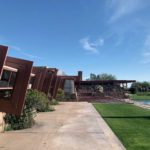




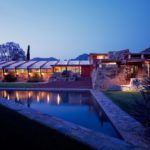

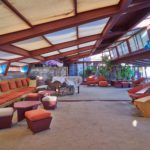
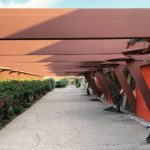
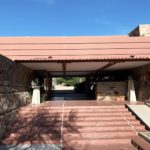


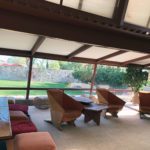
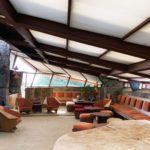
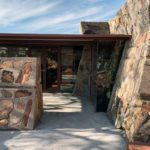
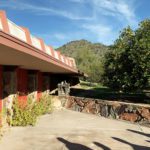
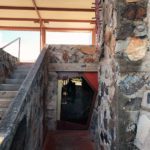
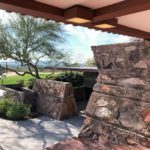
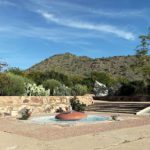

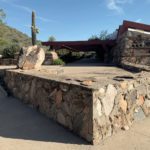




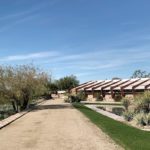


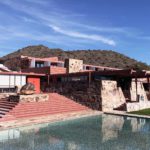



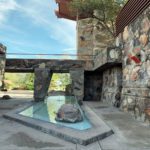






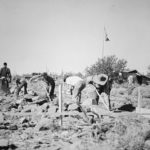


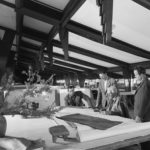
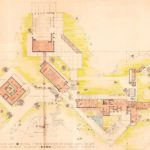

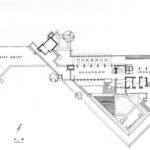
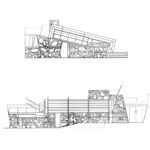

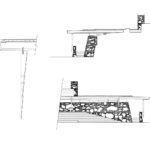
About Frank Lloyd Wright
Frank Lloyd Wright (1867 – 1959) was a prolific American architect, interior designer, writer, and educator who left an indelible mark on the world of architecture. His extensive career spanned over seven decades, during which he designed more than 1,000 structures, with 532 of them being completed and many becoming iconic landmarks. Wright was a pioneer in his field, passionately advocating for the integration of architecture with nature and humanity. He coined the term “organic architecture” to describe his design philosophy, which sought to create harmonious spaces that seamlessly blended with their surroundings.
Wright’s innovative approach extended beyond residential designs, encompassing various building types such as commercial, cultural, religious, and educational structures. Some of his most celebrated works include the Solomon R. Guggenheim Museum in New York City, Fallingwater in Pennsylvania, and the Robie House in Chicago. His distinctive style and design principles broke away from traditional architectural norms and paved the way for modernist movements like the Prairie School and the Usonian style.
Full Bio | Works from Frank Lloyd Wright
- In the Cause of Architecture I (1908)
- Frank Lloyd Wright’s Taliesin and Taliesin West by Kathryn Smith

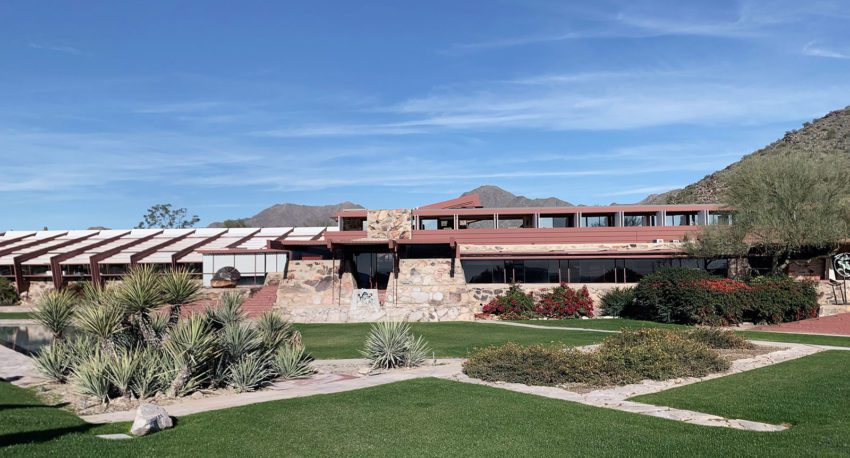
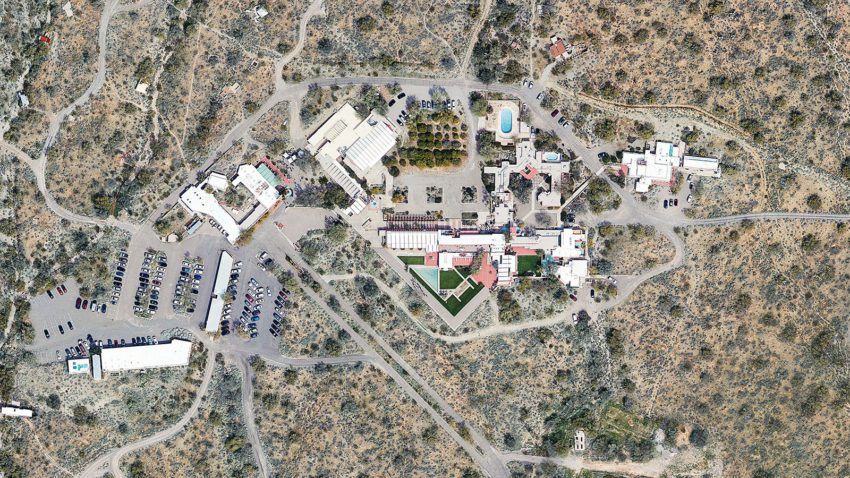
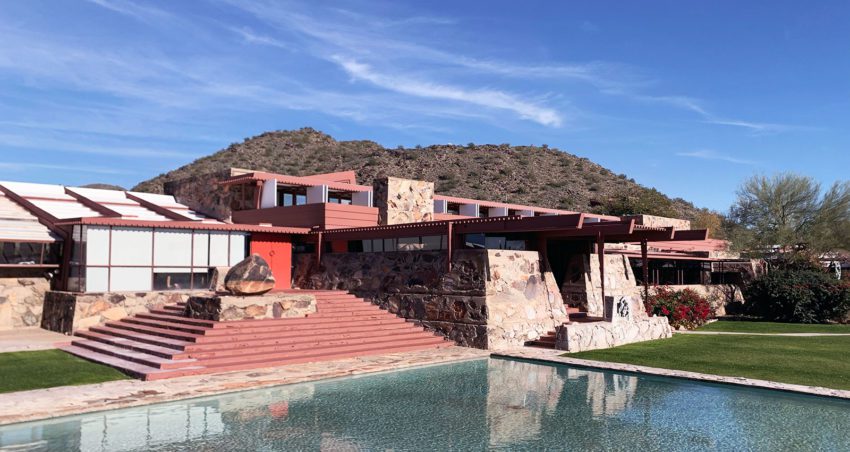


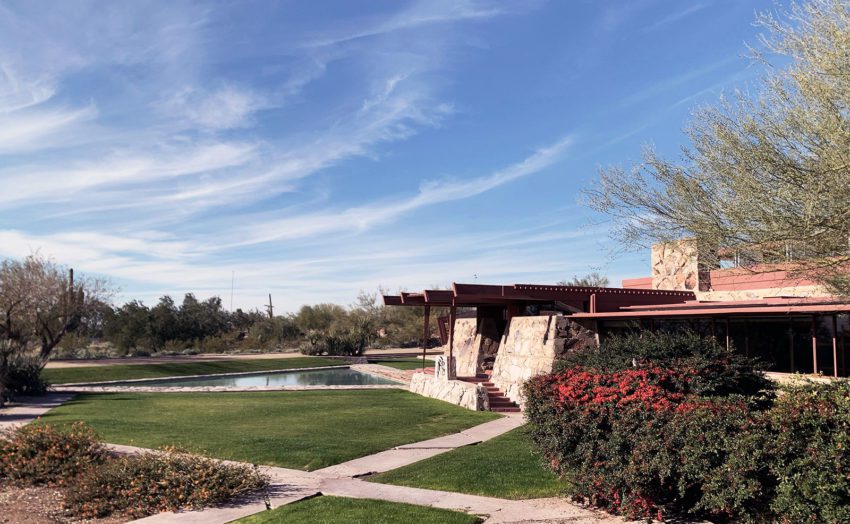
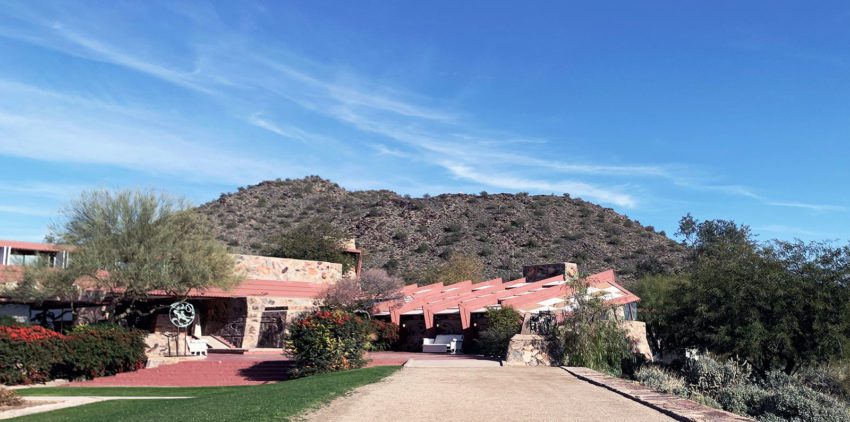
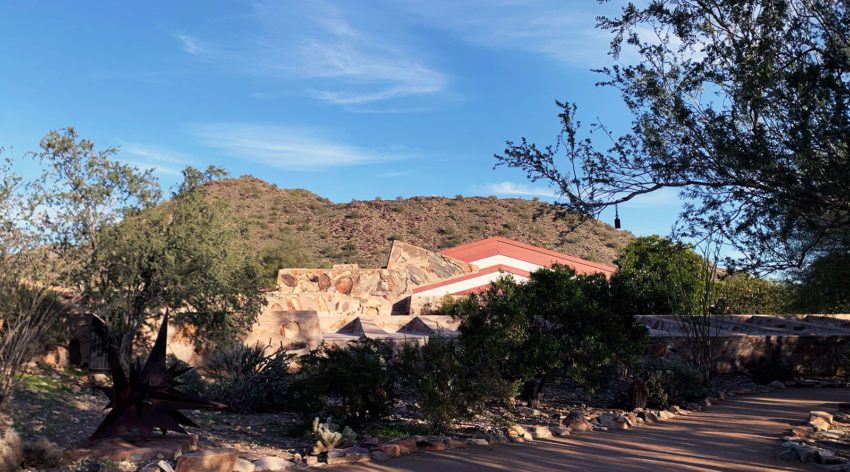
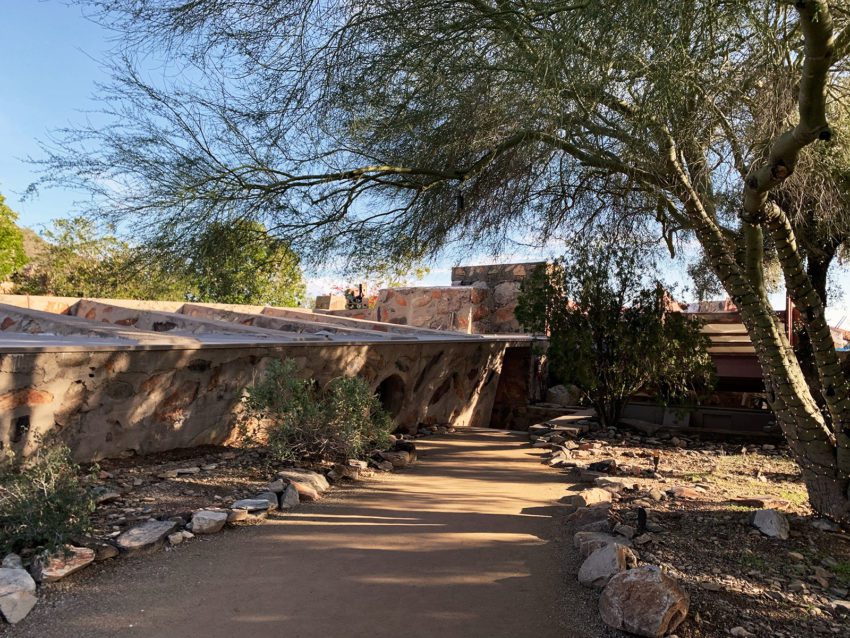
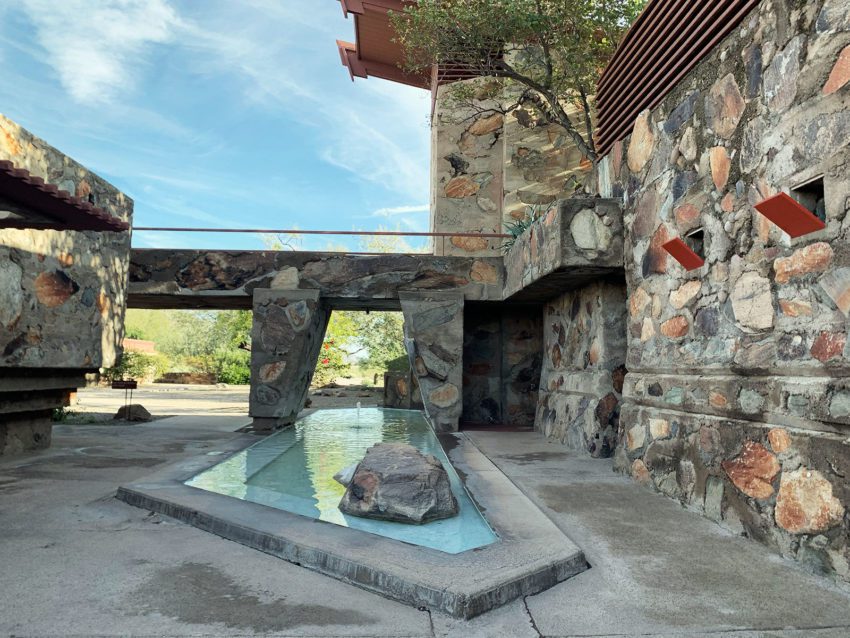

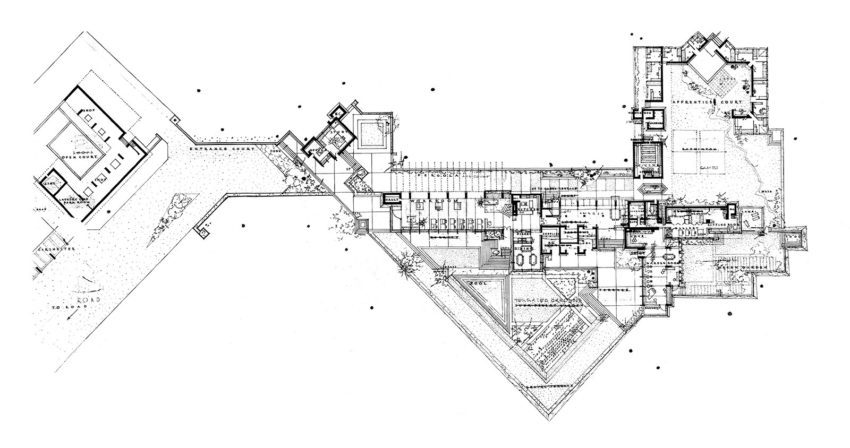
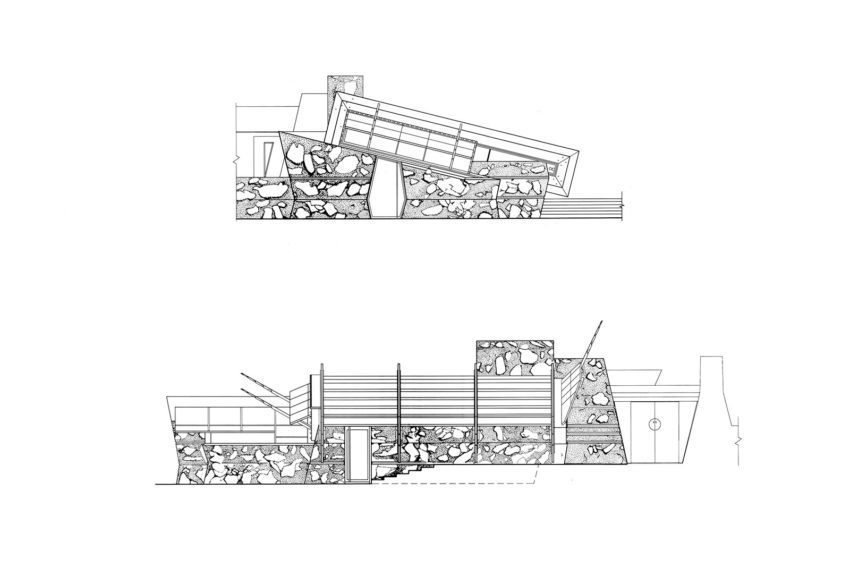
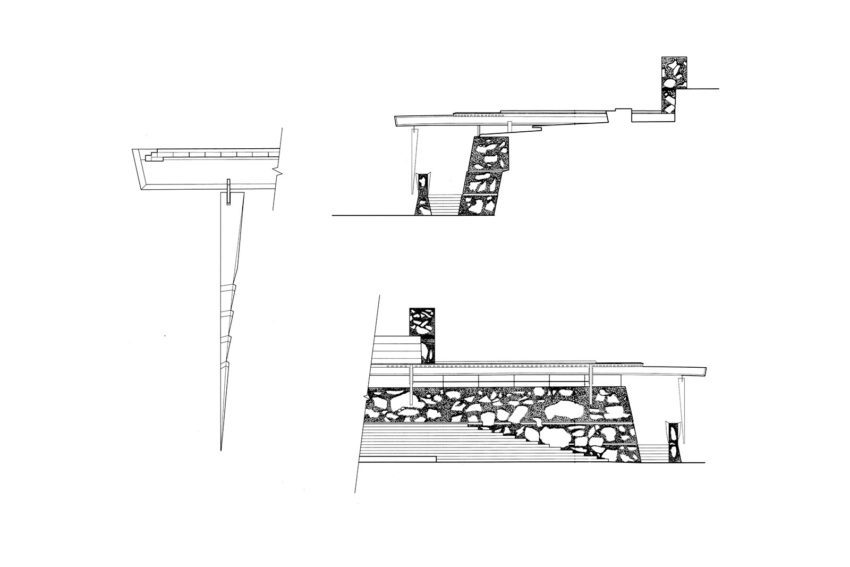

Having read this I believed it was extremely enlightening. I appreciate you spending some time and effort to put this content together. I once again find myself personally spending a significant amount of time both reading and leaving comments. But so what, it was still worth it!
This masterpiece truly showcases Wright’s distinctive organic design principles and deep connection to the surrounding landscape. It’s inspiring to see how Taliesin West continues to thrive as the primary campus for The School of Architecture at Taliesin and as the home of the Frank Lloyd Wright Foundation.
We couldn’t agree more with your appreciation of Taliesin West and Frank Lloyd Wright’s architectural vision. The way he seamlessly integrated nature into his designs is truly remarkable and serves as an inspiration for architects and designers today. Thank you for sharing your thoughts and for recommending the article to others who share a passion for architecture and design.
Major thankies for the blog article.Really looking forward to read more. Much obliged.
Looking forward to reading more. Great blog.Really looking forward to read more. Really Cool.
bookmarked!!, I like your site!
Oh my goodness! Awesome article dude! Many thanks, However I am encountering troubles with your RSS. I don’t understand the reason why I cannot subscribe to it. Is there anyone else getting the same RSS issues? Anyone who knows the solution can you kindly respond? Thanx!!
I am so grateful for your article post.Really thank you! Cool.
There’s definately a great deal to learn about this topic. I really like all of the points you’ve made.
Very good post. Want more.
Muchos Gracias for your article post.Really looking forward to read more.
Thanks so much for the article.Thanks Again. Really Great.
Say, you got a nice blog post. Will read on…
I loved your blog post. Great.